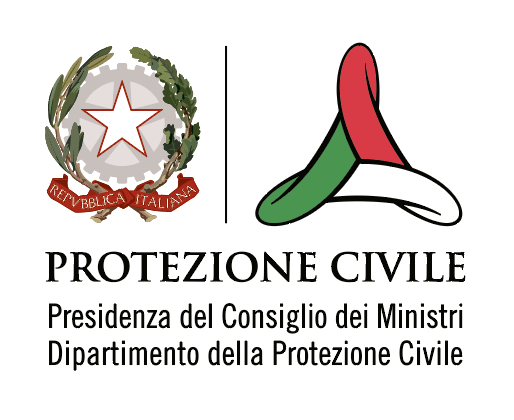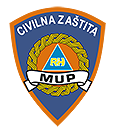Partners
The Western Balkans and Türkiye have a complex disaster profile of earthquakes, floods, landslides, fires and draught. Adding the impact of the Covid-19 pandemic, the region demonstrates a great potential for integrating health in the disaster risk management. The IPA CARE Programme works with the civil protection authorities and the ministries of health in each of the partner countries. A designated National Coordinator has been nominated for each country, based at the civil protection authority.
Albania
Civil protection sector
Over recent years, the Albanian government has restructured its National System of Civil Protection on Disaster Risk Reduction, aligning with the European Union Legal framework and the Sendai Framework. The National Civil Protection Agency (NCPA) was formed in 2019 under the Civil Protection Law, facilitating an extensive reform of the Albanian Civil Protection System. At the central level, NCPA focuses on disaster risk prevention, forecasting, monitoring, and intervention procedures through key documents such as Disaster Risk Assessment and Disaster Risk Reduction Strategy.
Web: www.akmc.gov.al
Health sector
Emergencies are coordinated by NCPA, and the National Emergency Medical Center (MoH) is an operational structure in the civil protection system. The country has a national coordination mechanism for the request and reception of international medical assistance in case of need following an emergency, through NCPA. The National Emergency Medical Center (MoH) is one of the operational structures of the civil protection system, according to the Law nr. 45/2029 on “Civil protection”.
Bosnia and Herzegovina
Civil protection sector
Bosnia and Herzegovina (BiH) feature an intricate administrative framework comprising entities and state-level institutions. The internal structure of Bosnia and Herzegovina is determined by the Constitution of Bosnia and Herzegovina and consist of the two Entities, the Federation of Bosnia and Herzegovina and the Republic of Srpska (hereinafter “the Entities”) and the Brčko District of Bosnia and Herzegovina (hereinafter “Brčko District BiH”) that is a single administrative unit of local self-government existing under the sovereignty of Bosnia and Herzegovina.
The system of protection and rescue in Bosnia and Herzegovina is thus a result of the constitutional structures, specifically the organizational and managerial concentration of power. It is organized on four levels, namely:
- state level (Ministry of Security of Bosnia and Herzegovina - Sector for Protection and Rescue);
- entity level and the level of Brčko District BiH (Federal Administration of civil protection, Republic Administration of Civil Protection, and the Public Security Department of the Brčko District BiH);
- cantonal administration of civil protection (within the Federation of Bosnia and Herzegovina);
- municipal civil protection services (within the Federation of Bosnia and Herzegovina and Republic of Srpska)
Web: www.msb.gov.ba
Health sector
Bosnia and Herzegovina has a complex health systems linked to the two entities (the Federation of Bosnia and Herzegovina and the Republika Srpska) and the district (he Brčko District of Bosnia and Herzegovina) comprising 13 health insurance funds and 14 ministries in charge of health. At the state level, the Ministry of Civil Affairs is responsible for the coordination of the health sector in Bosnia and Herzegovina.
Web: www.mcp.gov.ba
Kosovo*
Civil protection sector
The Emergency Management Agency (EMA) is the responsible civil protection agency for disaster risk management. Its objectives include reducing societal risks and vulnerabilities, developing society's ability to manage disasters and emergencies, and strengthening the coordination and direction of disaster, crisis, and emergency management.
Web: www.ame.rks-gov.net
Health sector
IPA CARE works with the Ministry of Health in Kosovo*, focusing on the area of emergency response.
Web: www.msh.rks-gov.net
Montenegro
Civil protection sector
The Protection and Rescue Directorate, operating under the Ministry of Interior, stands as the key civil protection agency responsible for Disaster Risk Management (DRM) in Montenegro.
Web: www.mup.gov.me
Health sector
IPA CARE works with the Ministry of Health in Montenegro, focusing on the area of emergency response.
Web: www.gov.me/en/mzd
North Macedonia
Civil protection sector
North Macedonia has a history of earthquakes, experiencing several shocks with a magnitude of 6 or higher, with an additional ten potential active seismic zones. In North Macedonia, civil protection is organized as a single system regulated by the Protection and Rescue Law, focusing on tracking, preventing, and mitigating the consequences of disasters and emergencies.The Protection and Rescue Directorate, the national emergency management authority, develops plans, assesses endangerment, and organizes the protection and rescue system. Training programs are conducted for response units and international collaboration.
The Crisis Management Center serves as the central communication hub, managing the 24/7 State Operations Centre and an early warning/alert system. A national platform facilitates cross-border disaster response, with institutions declaring capacities for international operations.
Web: www.dzs.gov.mk
Health sector
IPA CARE work with the Ministry of Health in North Macedonia, focusing on the area of emergency response.
Web: www.zdravstvo.gov.mk
Serbia
Civil protection sector
Serbia has a well-established legal framework in the civil protection field. The responsible authority is the Ministry of the Interior, Sector for Emergency Situations. The Ministry of the Interior’s responsibilities ranges from overall legislation to policy development and implementation, including the National Security Policy and the National Strategy for Protection and Rescue. The Sector has expanded its scope since 2006, now encompassing Directorates dedicated to preventive protection, risk management, and civil protection.
Web: www.mup.gov.rs
Health sector
The health sector in Serbia is guided by the Law on Health care when responding to emergencies and disasters. Article 42 defines the obligations of private health care entities to national and local emergency management authorities. Health risks are integrated into the broader disaster risk management frameworks, with laws on Disaster Risk Reduction (DRR), Emergency Management (EM), and healthcare working in tandem. Complementing these efforts, the Ministry of Health has embraced a national programme dedicated to protection and rescue during emergency situations, further underlining the country's commitment to a comprehensive and coordinated approach to health and emergency management. Although, optimal preparedness and response in the Serbian health sector need revisiting of the incorporation of health considerations into a comprehensive national risk assessment.
Türkiye
Civil protection sector
The 1999 Marmara earthquake marked the turning point in the area of disaster management and coordination in Türkiye, demonstrating the need to reform disaster management and compelled the country to establish a single government institution to single-handedly coordinate and exercise legal authority in cases of disaster and emergencies. In line with this approach, the Turkish Parliament passed Law No.5902 in 2009 to form the Disaster and Emergency Management Authority (AFAD) under the Prime Ministry and abolish various agencies under whose jurisdiction the issue previously fell. AFAD as an institution works to prevent disasters and minimize disaster-related damages, plan and coordinate post-disaster response, and promote cooperation among various government agencies. In this regard, AFAD introduced a novel disaster management model, which prioritizes Türkiye's transition from crisis management to risk management – which came to be known as the Integrated Disaster Management System. AFAD currently has 81 provincial branches across Türkiye in addition to 11 search and rescue units. Notwithstanding its position as the sole authority on disasters and emergencies, AFAD cooperates with a range of government institutions and non-governmental organizations depending on the nature and severity of individual cases.
Web: www.afad.gov.tr
Health sector
Türkiye has already developed a strong system for disaster management. AFAD (Disaster and Emergency Management Authority, Ministry of Interior) is the leading agency for disaster response and works in close collaboration with UMKE (the National Medical Rescue Team, Ministry of Health) for the response of health emergencies or secondary health risks. Medical surge capacities are extensive in terms of technical expertise, human and material resources. Those include a WHO classified EMT type 2 and one EMT type 1 under classification.
Web: www.acilafet.saglik.gov.tr
*This designation is without prejudice to positions on status, and is in line with UNSCR 1244/1999 and the ICJ Opinion on the Kosovo declaration of independence.







